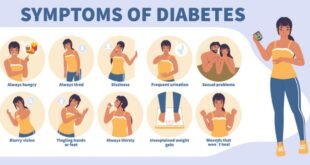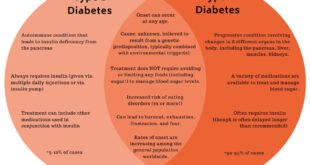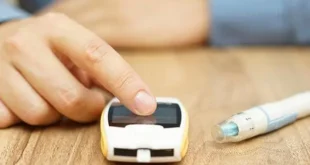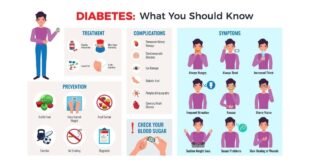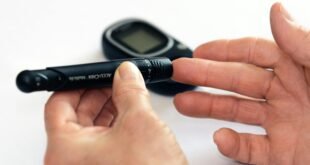🩺 How Often Should You Check Your Blood Sugar Levels?
Monitoring your blood sugar is one of the most important aspects of managing diabetes. Whether you’ve been recently diagnosed or have lived with the condition for years, understanding when and how often to check your glucose levels can help you stay healthy, avoid complications, and make informed decisions about your lifestyle and treatment.
But how often should you check? The answer depends on several factors, including the type of diabetes you have, your treatment plan, your daily routine, and your overall health. Let’s explore the key considerations and recommendations.
🔍 Why Blood Sugar Monitoring Matters
Blood sugar monitoring provides real-time feedback about how your body is responding to food, exercise, medication, stress, and illness. It helps you:
- Track the effectiveness of your treatment plan
- Detect high (hyperglycemia) or low (hypoglycemia) blood sugar levels
- Adjust insulin or medication doses
- Understand how lifestyle choices affect your glucose
- Prevent long-term complications like nerve damage, kidney disease, and vision loss
🧬 Type of Diabetes and Monitoring Frequency
🩸 Type 1 Diabetes
People with type 1 diabetes typically require frequent monitoring, especially if they use insulin. Recommendations include:
- Before meals and snacks
- 1–2 hours after meals
- Before and after exercise
- Before bedtime
- Sometimes during the night
- When feeling symptoms of high or low blood sugar
- When sick or stressed
This can add up to 4–10 checks per day, depending on your individual needs.
💉 Type 2 Diabetes
Monitoring frequency for type 2 diabetes varies widely:
- If you’re on insulin: You may need to check before meals and at bedtime, or more often if using multiple daily injections.
- If you’re on oral medications: You might only need to check once or twice a day, or a few times per week.
- If your diabetes is well-controlled without medication: Your doctor may recommend occasional checks, such as fasting glucose in the morning or after meals to assess how food affects your levels.
🧪 Prediabetes
If you have prediabetes, routine blood sugar checks aren’t usually required. However, occasional testing—especially fasting glucose or HbA1c—can help track your risk and motivate lifestyle changes.
🕰️ Key Times to Check Your Blood Sugar
Here are the most common times to test, and why they matter:
🌅 Fasting (Before Breakfast)
- Provides a baseline reading after 8+ hours without food
- Helps adjust long-acting insulin or oral medications
- Target range: 80–130 mg/dL (ADA recommendation)
🍽️ Before Meals
- Helps determine if you need insulin before eating
- Assesses how well previous doses are working
⏱️ 1–2 Hours After Meals
- Shows how food affects your blood sugar
- Helps evaluate mealtime insulin effectiveness
- Target range: <180 mg/dL
🌙 Before Bed
- Screens for nighttime hypoglycemia
- May guide bedtime snacks or insulin adjustments
🛌 Overnight (2–3 AM)
- Detects nocturnal hypoglycemia, especially if you wake up feeling shaky or sweaty
- Important for those on insulin or with frequent lows
🏃♂️ Before and After Exercise
- Prevents exercise-induced lows
- Helps plan snacks or insulin adjustments
🤒 During Illness or Stress
- Blood sugar can spike due to infection or emotional stress
- More frequent checks help guide treatment
📱 Tools for Monitoring
🧪 Blood Glucose Meter
- Requires a fingerstick and test strip
- Provides immediate readings
- Ideal for spot checks throughout the day
📲 Continuous Glucose Monitor (CGM)
- Worn on the body and tracks glucose 24/7
- Sends data to a smartphone or receiver
- Alerts you to highs and lows in real time
- Reduces the need for frequent fingersticks
CGMs are especially helpful for people with type 1 diabetes or those with frequent hypoglycemia.
🧠 Can You Test Too Much?
Yes—especially if you’re not on insulin or your diabetes is well-controlled. Over-testing can lead to:
- Unnecessary stress or anxiety
- Skin irritation from frequent fingersticks
- Wasted test strips and higher costs
Your doctor can help you find the right balance. The goal is to test enough to stay safe and informed, but not so much that it disrupts your life.
🧑⚕️ Personalizing Your Monitoring Plan
There’s no one-size-fits-all answer. Your healthcare provider will consider:
- Your type of diabetes
- Your medications
- Your risk of hypoglycemia
- Your lifestyle and schedule
- Your insurance coverage for test supplies
Together, you’ll create a plan that fits your needs and goals.
📝 Sample Monitoring Schedules
Here are examples based on different scenarios:
| Scenario | Suggested Monitoring Frequency |
|---|---|
| Type 1 Diabetes on insulin pump | 6–10 times/day or CGM |
| Type 2 Diabetes on multiple insulin injections | 4–6 times/day |
| Type 2 Diabetes on oral meds | 1–2 times/day or a few times/week |
| Type 2 Diabetes with diet control only | Fasting and occasional post-meal checks |
| Prediabetes | Periodic fasting glucose or HbA1c |
🧘 Tips for Successful Monitoring
- Keep a log of your readings (paper or app)
- Note meals, exercise, stress, and medication
- Share your data with your doctor regularly
- Use alarms or reminders to stay consistent
- Rotate fingerstick sites to avoid soreness
❤️ Final Thoughts
Checking your blood sugar is more than just a number—it’s a window into your health. By understanding when and how often to test, you empower yourself to make smarter choices, avoid complications, and live well with diabetes.
Whether you’re using a traditional meter or a CGM, consistency and awareness are key. Work closely with your healthcare team to create a monitoring plan that fits your life, supports your goals, and keeps you safe.
 Kolnest.com – Know the Signs. Change the Future. Entertainments, Gadgets, Business, News, Articles, Love, Travel, Heallth
Kolnest.com – Know the Signs. Change the Future. Entertainments, Gadgets, Business, News, Articles, Love, Travel, Heallth

